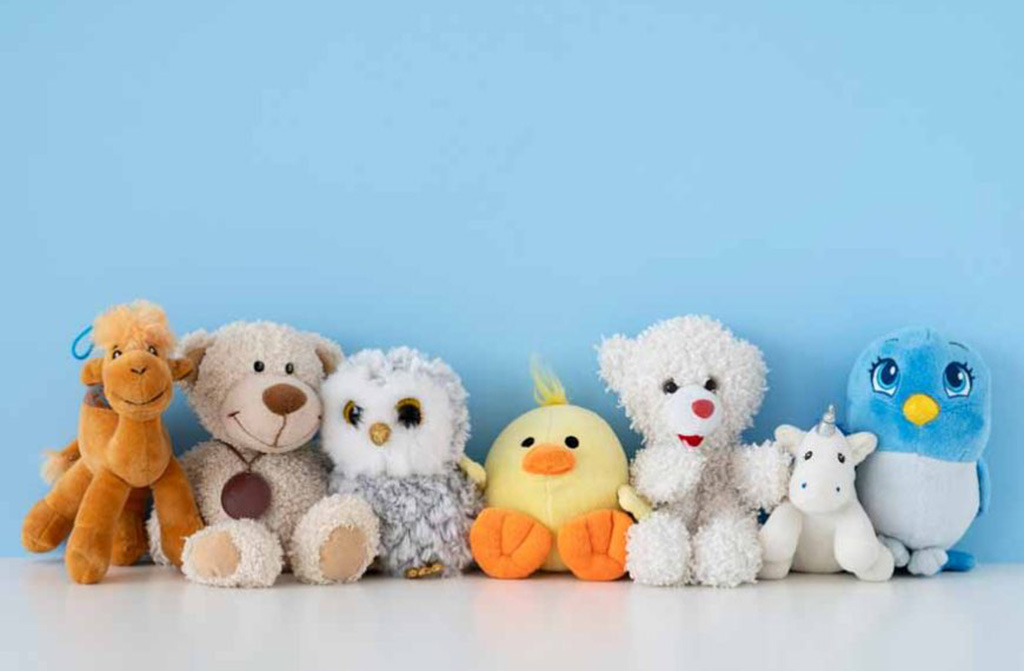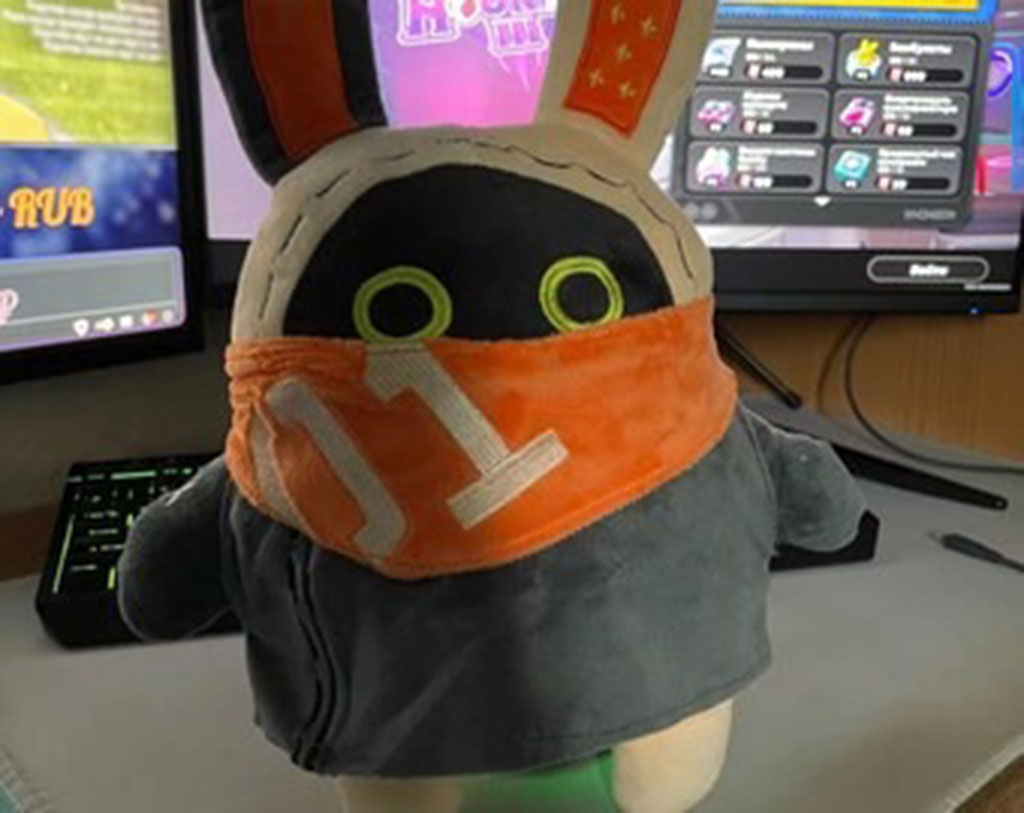By Amanda — Kinwin (OEM/ODM plush manufacturer; CE & ASTM ready). This article shares practical, non-legal guidance from a manufacturer’s perspective.
Stuffed animals begin with imagination, but once a design becomes a real product, intellectual property (IP) is crucial. Buyers and creators often ask: Can I copyright a stuffed animal? The short answer is yes—certain aspects can be protected by copyright, while other elements fall under trademark or patent. In this guide, I’ll explain what’s protectable, how registration works, and how to minimize infringement risk when you scale with an OEM/ODM partner.
Quick note: This guide is for general information only and isn’t legal advice. For a specific case, consult an IP attorney in your target market.
What aspects of a stuffed animal design are eligible for copyright protection?

Copyright protects original works of authorship fixed in a tangible medium. For plush toys, that means the artistic expression—not general ideas like “a cute bear.”
Protectable elements typically include:
- The overall sculpt/shape language if it shows creative authorship (proportions, stylization).
- Original surface artwork: embroidery art, printed patterns, graphic motifs, colorways (when chosen creatively).
- Character expression: unique facial layout, signature pose, distinctive silhouette (as artistic expression).
- Concept art & patterns: 2D drawings, pattern files, turnaround sheets (as pictorial/graphic works).
Not typically protected by copyright:
- Functional elements (safety stitching placements, seam allowances, internal gussets purely for function).
- Common/stock features (generic teddy nose, basic oval eyes) without distinctive arrangement.
- Ideas or concepts (e.g., “a sleepy rabbit”)—only the particular expression of that idea is protectable.
Table 1 — Copyright Eligibility Snapshot
| Element | Usually Copyrightable? | Why |
|---|---|---|
| Unique facial layout & stylized proportions | Yes | Original artistic expression |
| Embroidery/print artwork (patterns, graphics) | Yes | Pictorial/graphic work |
| CAD turnarounds & pattern drawings | Yes | Fixed creative drawings |
| Functional seam map, stuffing densities | No | Primarily utilitarian |
| Generic animal species idea | No | Idea, not expression |
How does copyright law differ from trademark and patent protection in the toy industry?

Each IP tool protects something different. Confusion here leads to costly mistakes.
- Copyright: Protects original artistic expression (the creative look/artwork). It arises automatically upon creation in many countries, but registration strengthens enforcement (statutory damages, attorney fees in some jurisdictions).
- Trademark: Protects brand identifiers—names, logos, slogans, distinctive packaging (“trade dress”) that signal source. Trademarks guard your brand, not your character artwork per se (unless the trade dress is distinctive).
- Patent: Protects functional inventions (utility patents) or ornamental designs of functional items (design patents/registered designs). For plush, a design patent (US) or registered design (EU/UK) can protect a novel ornamental shape.
Table 2 — Copyright vs. Trademark vs. Patent (At a Glance)
| Tool | Protects | Typical Use in Plush | Lifespan (overview)* |
|---|---|---|---|
| Copyright | Artistic expression (art, stylized character, drawings) | Character art, prints, turnarounds | Life of author + decades (varies) |
| Trademark | Brand identifiers (logo/name/trade dress) | Brand name, hangtag logo, distinctive box | Renewable as long as in use |
| Design Patent/Registered Design | Ornamental form of a functional object | Unique plush silhouette/shape | ~15–25 yrs depending on country |
| Utility Patent | New/functional invention | Mechanisms in interactive plush | ~20 yrs (from filing) |
*Exact terms vary by jurisdiction.
What steps are involved in registering a stuffed animal design for copyright?

While copyright often exists automatically, registration (where available) gives stronger remedies and a public record. A practical workflow from my side as a manufacturer:
- Fix the work: finalize artwork, model sheets, pattern drawings, and clear photos of the prototype (date-stamped).
- Identify the author(s) & ownership: is it in-house, freelance, or work-for-hire? Ensure contracts assign rights to the business entity.
- Collect assets: high-res images of the plush from multiple angles; copies of embroidery/print files; concept art.
- File the application (per jurisdiction): deposit copies of the artwork and representative images of the 3D object.
- Maintain records: keep version history, file names, dates, and emails proving creation timeline.
Table 3 — Copyright Registration Checklist (Practical)
| Item | Why It Matters | Tip |
|---|---|---|
| Signed work-for-hire/assignment | Clarifies ownership | Do this before sampling |
| Time-stamped concept files | Proves priority | Use cloud with audit trail |
| Multi-view photos of plush | Shows protectable expression | Neutral lighting, ruler for scale |
| Deposit copies per office rules | Satisfies formalities | Export vector + raster versions |
| Filing receipts & certificates | Enforcement leverage | Link them to product SKUs |
How do manufacturers and designers prove originality in plush toy creations?

Originality doesn’t mean “never seen an animal before.” It means independent creation with creative choices. To evidence this, we keep:
- Process documentation: sketches → CAD → stitch files → prototype photos (with dates).
- Design rationale: notes on why we chose specific eye spacing, muzzle width, or color blocking.
- Comparative searches: quick landscape scans to ensure the design isn’t a close copy of a known character.
- File metadata & email threads: creation and approval timestamps.
When a dispute arises, this trail helps show independent authorship and non-derivative work.
What are the risks of copyright infringement when producing similar stuffed animals?

Risks appear when a new design is substantially similar to a protected work. In plush, common pitfalls include:
- Mimicking a distinctive face (eye/eyebrow geometry, mouth curve) of a known character.
- Copying unique print/embroidery art (e.g., signature stripes or emblem shapes).
- Following a licensed silhouette too closely (ears/tail/pose combination that is iconic).
Risk management I use with buyers:
- Similarity scan: compare your design to top IPs in your category.
- Change the constellation: if there’s overlap, alter at least three major visual anchors (silhouette, facial ratios, graphic motifs).
- Document independent creation: show your step-by-step process.
Table 4 — Infringement Risk Signals & Mitigations
| Risk Signal | Why It’s Risky | Mitigation |
|---|---|---|
| Iconic facial layout strongly resembles a famous character | Likely “substantial similarity” | Redesign eye spacing, mouth geometry, silhouette |
| Unique graphic emblem reused | Copy of protectable artwork | Replace with original embroidery |
| Licensed costume/lookalike outfit | Implies affiliation | Create new costume & colorway |
| Same name or confusingly similar brand | Trademark conflict | Clear new name & register |
How can OEM & ODM agreements protect intellectual property in plush toy manufacturing?

Your contract is a frontline IP tool. As an ODM/OEM partner, we place IP clauses in plain business English so both sides understand responsibilities.
Key clauses to include:
- Ownership & license: who owns the artwork, patterns, and samples; scope of license to manufacture.
- Confidentiality (NDA): protects drawings, pricing, and client lists.
- Non-use & non-disclosure: factory cannot reuse your tooling/art for others.
- Exclusivity (if paid for): define SKUs, regions, and term.
- Inbound IP warranties: client warrants they own/sub-license all supplied art.
- Infringement response: process for takedowns, rework, or withdrawal.
- Tooling & pattern custody: who holds, who can access, how returned/destroyed.
Table 5 — OEM/ODM IP Clause Builder
| Clause | What It Does | Practical Tip |
|---|---|---|
| Ownership/Assignment | Confirms who owns final art/patterns | Tie to invoice/PO number |
| NDA & Non-Use | Blocks reuse of your design | Extend to subcontractors |
| Exclusivity | Locks category/region | Add performance triggers |
| Warranty & Indemnity | Confirms client has rights | Cap liability commercially |
| Takedown Protocol | Fast response to claims | Define 72-hour action window |
| Tooling Custody | Controls patterns/molds | Inventory at each reorder |
What global differences exist in copyright protection for stuffed toy designs?

Core principles are similar, but procedures, terms, and enforcement vary.
- United States: Registration unlocks statutory damages in many cases; design patents protect ornamental shape; trade dress possible for distinctive packaging.
- European Union: Copyright standards vary by member state; strong Registered Community Design system for shapes; unregistered design right provides short-term protection after disclosure.
- United Kingdom: Copyright + registered/unregistered designs; clear guidance on “design right” for 3D forms.
- Japan: Copyright plus Design Act registration for product shapes; strong brand enforcement culture.
- China: Copyright protection available; Design patents and trademark are often primary tools; important to register early and keep evidence.
Practical rule: register early in your sales regions, and align contracts and labeling with those jurisdictions.
Conclusion
Yes, you can copyright a stuffed animal—the creative expression in its look, artwork, and drawings. Pair copyright with trademark (your brand) and, where appropriate, design patents/registered designs (your shape). Then lock protection into your OEM/ODM contracts and maintain clean creation records. That’s how you protect your character—and scale safely.
At Kinwin, we turn ideas into compliant, market-ready plush while respecting IP on both sides. We’ll help you document originality, prepare clean tech packs, and manufacture under strict confidentiality.
Contact me at [email protected] or visit kinwintoys.com to discuss your next plush project and IP-safe production plan.







